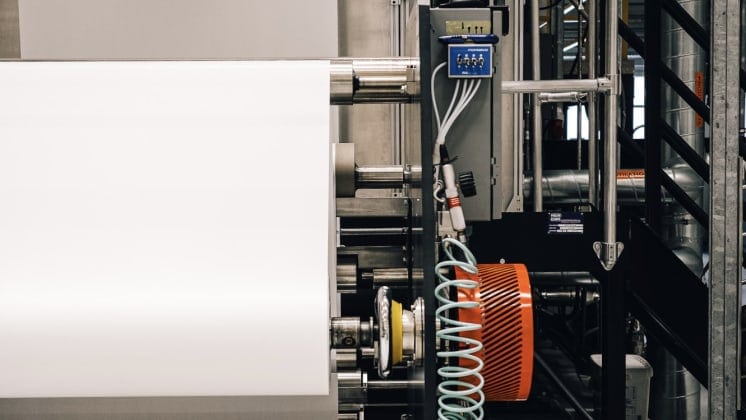Navigating water reuse: The present and future of municipal and industrial water

By Xuan Tung Nguyen, Head of Commercial Engineering, Aquaporin Asia
We experience a growing importance of the water reuse concept, where we look beyond water treatment for additional and alternative sources to fulfill our water needs.
Why is water reuse increasingly important?
1) Increased population
For municipalities, the scale of water treatment that is required for an increasing population is much bigger than previously if you want to meet the corresponding rise in clean water demand.
2) Increased industrial activity and contaminant load
For industries, clean water is needed for many different steps in a wide variety of manufacturing processes. However, as industrial processes advance, the raw materials and chemicals being used – and the waste produced – also get more advanced and specialized. We use – and will continue in the future to use – new materials that we have never used before, and these materials produce waste compounds that we have never treated before. As this waste gets discharged, water sources become contaminated with a greater volume of pollutants, and with new pollutants, and this makes the natural water more difficult to treat.
So, there is a need to isolate and centralize that kind of contaminated wastewater and prevent it from getting into the natural water sources.
We want to be able to treat this discharge as close upstream – meaning closer to the source of contaminants – as possible. Because the scale of that is relatively smaller. While it is more challenging in terms of contaminant load, the scale of treating natural water sources is so much bigger to handle.
3) Climate change makes natural water supply unpredictable
On top of industrial activities, there is also the issue of climate change. Rainfall that replenishes natural water sources is no longer predictable. Sea levels are rising, and this increases the salinity of natural water sources, which, again, makes them more difficult to treat. The treatment process is becoming more difficult and less efficient.
4) Push for self-reliance
For Singapore, where I live, and for many other countries, the push for water reuse stems from the aspiration to move towards achieving water supply independence. Full dependence on natural water sources is no longer sustainable due to climate change, increased population, and increased industrial activity and discharge. Relying solely on imported water is also not a viable long-term solution.
How is water being reused currently? And how will it evolve in the future?
Industrial water reuse
Some industrial water reuse is already being channeled to provide enough water for cleaning and cooling tower purposes. This is the lower-grade water, and it can be used in localized industrial water reuse, which the local production plant can tap into on top of extracting more water from the municipal water network.
For the industry that is a trend that will continue. Water costs will continue to rise, and with regulations in place regarding the quality of industrial wastewater discharge, production plants are already treating their wastewater to comply. It is simply practical to reuse the treated water for other purposes within the plant itself, so the facility can reduce its water intake – and costs – from the municipal supply. In that sense, we will be seeing more decentralized water treatment and water reuse in the future.
Municipal water reuse
On the municipal scale, Singapore’s NEWater is the biggest example of its kind, although it remains a somewhat tricky topic between the government and the residents. Water reuse may thus not be directly applied to residential or drinking purposes just yet, but it can be used to either supply very high-quality water for industrial use or to boost the volumes of water catchment facilities such as dams or reservoirs.
For municipal water reuse, the trend is in micropollutants. The question is, after we treat the water, what else is entering the treated water that was previously undetected, but may still pose harm when consumed?
Industries will always discharge new types of pollutants into the sewer network, and there will always be trace amounts that were previously undetected because there was no technology to identify them yet, and therefore no attention was paid to them.
The focus of the ongoing research in this area is not only to identify these new contaminants and see what potential impact it has on human health when we reuse water, but also to detect new types of micropollutants that are entering the public sewers and ending up in the treated water – and how to remove them.
How is Aquaporin contributing to the future of water reuse?
Aquaporin provides unique low-energy solutions
By now, we’ve covered the subjects of contaminants from industries that are getting harder to treat, and the ability to efficiently detect and quarantine those new kinds of micropollutants or contaminants, but there is also the fact that water is a public good. It needs to be affordable. And a lot of these kinds of treatments require a high amount of energy – especially if we want to treat more challenging feed water and deal with micropollutants.
The energy price is not going down.
So, in a climate where securing diversified energy sources for public use is of utmost importance, there is also a big push to make water treatment technologies more efficient and responsible. That is where Aquaporin hopes to add value by providing low-energy brackish water RO membranes with the Aquaporin Inside® CLEAR series. We aim to keep treated water affordable for both industrial and drinking water use.
On top of that, we give room for future energy price surges and the increasing demand to treat more challenging contaminants, which also requires a high energy consumption.
Aquaporin is part of the water treatment ecosystem
These modern challenges are the results of global, systemic changes over many years. Tackling them requires efforts on a similarly large scale, and I am proud to say that Aquaporin is part of the solution. We all work on exploring how to enhance the efficiency of water reuse and treatment to have a positive impact on the world’s water treatment ecosystem. We hope that by putting our brand and our products out there, we can do our part in the ongoing quest for clean water.




